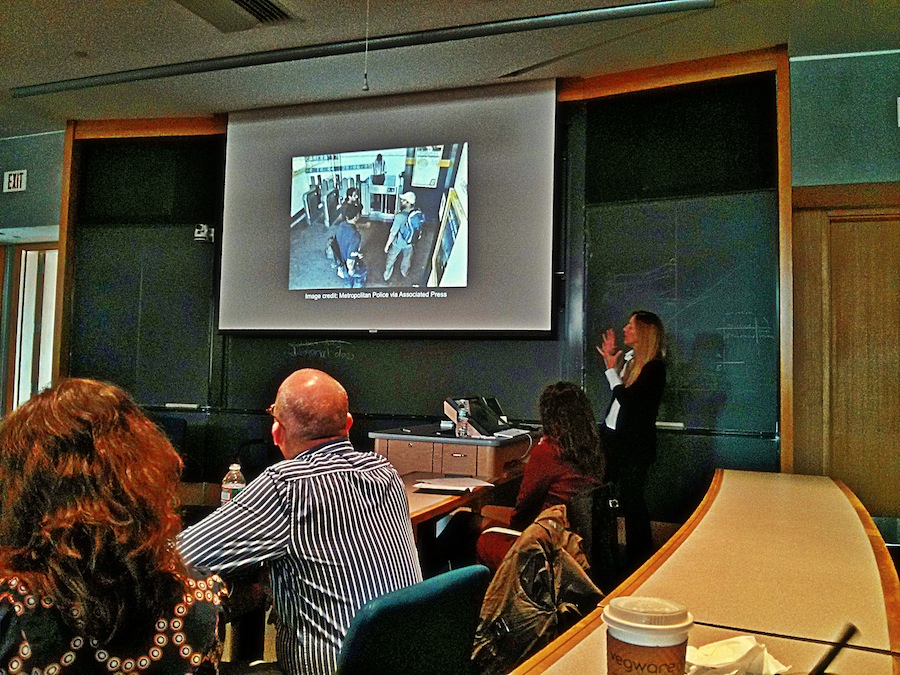On Saturday, May 4th I attended the ‘Labor and Technologies of Surveillance’ panel where Kelly Gates talked about ‘Professionalizing Police Media Work: Surveillance Video & the Forensic Sensibility.’ Gates, who has gone through an extensive training program in the field of video forensics as part of her research, discussed how raw video is not evidence despite video’s aesthetics of objectivity. The imagery of video and audiovisual material are perceived as evidence but instead they are pointing to an indexality which is produced through the media production and in the process of post-production. Gates argues that “the status of video evidence as an index of real events—a sign or representation that offers a direct, empirical connection to material reality—is the result of an intentional process of production” (2013). ((Gates, Kelly. 2013. “The Cultural Labor of Surveillance: Video Forensics, Computational Objectivity, and the Production of Visual Evidence.†Social Semiotics 0 (0): 1–19. doi:10.1080/10350330.2013.777593. http://www.tandfonline.com/doi/abs/10.1080/10350330.2013.777593.))
Temporal indexicality, where a timestamp in the video seems to point the moment in which it happened, is perceived as “objectivity” but Gates gives two reasons why a timestamp on a video cannot be considered objective evidence in court: First, the recorded surveillance video material may come from old VCRs and the time settings of the device may not be accurate. ((Consider, for example, a power outage resetting the VCR or summer and winter time.)) Second, you can use a time-code plugin to insert the timestamp afterwards.
Gates introduces the notion of “computational objectivity” as “an avenue to objective analytical results that aims to translate certain aspects of trained judgment into computational systems” (2013: 12). She builds on Daston & Galison’s Objectivity (2007) who historicize objectivity as an epistemic virtue related to specific periods: from truth to nature to mechanic objectivity through trained judgement. She updates Daston & Galison’s notion of “mechanic objectivity”, which was related to photographic and other visual forms of media, to “computational objectivity” to describe the production of objectivity using visual media within the computational turn. Computers are not replacing the professionals, but professionals are learned to look at images with a computational eye:
The emerging field of forensic video analysis is one site where an epistemic virtue of ‘‘computational objectivity’’ is taking shape: the belief that neutral scientific image analysis can be achieved by translating certain forms of professional trained judgment into computational processes or, in this case, through the application of computational techniques by police professionals retrained as video specialists. (Gates 2013: 304)
